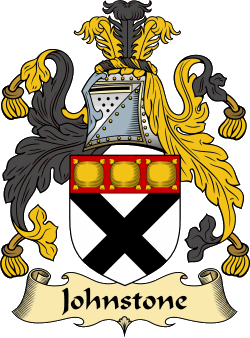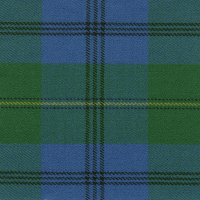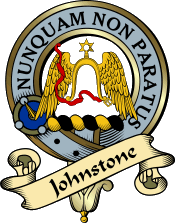|
|
Search

|
  Home Home
|
  Surname Surname
|
  First Name First Name
|
Popular Products

|
  Coat of Arms Coat of Arms
|
  Clan Badges Clan Badges
|
  Books & Gifts Books & Gifts
|
  Celtic Jewelry Celtic Jewelry
|
  Black Shirts Black Shirts
|
  CD Music CD Music
|
  Download Download
|
 Design Gallery
Design Gallery

|
  Irish Irish
|
  Flags Flags
|
  Celtic Celtic
|
  Tartans Tartans
|
  Scottish Scottish
|
  Claddagh Claddagh
|
  Surnames Surnames
|
  Highlander Highlander
|
  Celtic Radio Celtic Radio
|
Research

|
  History History
|
  Country Country
|
  Families Families
|
|
|
|
|
 Our store includes not only customized products, but select clothing items from brand name house hold names like Champion, Izod, WeatherProof, Adidas and more. For those in rural areas or that are home bound, we offer a separate clothing store containing thousands of items that can be purchased quickly with expedited service and shipping (hard to find larger sizes are available). We offer a wide selection of popular Celtic and Medieval books, Jewelry, Gifts, Accessories (such as caps and designer bags), Mouse Pads, Coat of Arms Plaques, Surname History PDF files, Bumper Stickers and Coat of Arms Downloads.
|
|
Our Heraldry Database has thousands of Family histories to search. Visit Now!
O'Dolan

Coat of Arms
The name Dolan is fairly common to-day in Ulster - in the Catholic areas of Counties Cavan and Fermanagh - and in the Counties of Roscommon and Galway in Connacht. The latter is the place of origin of this sept which is a branch of the Ui Maine (Hy Many). In the census of 1659 the name appears principally in Counties Roscommon and Fermanagh (the portion dealing with Co. Galway is missing). The gen.....
|
|
|
Heraldry Database: Johnstone
Johnstone

|
|


Surname: Johnstone
Branch: Johnstone
Origins: Scottish
More Info: Scotland
|
|
Background: Johnstone comes from "John's toun", not "John's stone" or John's son." Historically, "Johnston" has been an alternate spelling of the surname. The first known person of this name was John of Johnstone, who in 1174 gave his name to the lands of Annandale in Dumfrieshire which he had been granted. His son, called Gilbert Johnstone ("Gillibertus de Johnistoun") appears on records between 1194-1214 and onwards, presumably taking his surname from the town his father had established - "Johnstone" or "John's toun".
Gilbert's Grandson called Sir John Johnstone was a Knight of the county of Dumfries. Sir John Johnstone signed the Ragman Roll of King Edward I of England in 1296.
At this time Perth was known as St Johnston and Johnstonburn in East Lothian was then called Jonystoun. These two areas have records of the Johnstone Clan. A third area of Johnstones which came from Stephen the Clerk and Margaret the heiress of Sir Andrew Garioch used the family name of Johnston.
|
 Motto: Motto: Nunquam non paratus, Never unprepared. Arms: Argent, a saltire Sable, on a chief Gules three cushions Or. Crest: A winged spur Or. Supporters: Dexter, a lion rampant Argent, armed and langued Azure, crowned with an imperial crown Or; sinister, a horse Argent furnished Gules. Plant: Red Hawthorn. View the Heraldry Dictionary for help.

This name is a simple patronymic. The Johnstones were at one time amoung the most powerful of the Borders clans. They settled originally in Annandale, and have for over six hundred years held extensive possessions on the western marches where they kept watch against the English freebooters.
The first recorded of the family was John Johnstone, whose son, Gilbert, is named in records dated after 1194; John must therefore have been a prominent settler before that date. Sir John Johnstone, knight of the county of Dumfries, appears on the Ragman Roll swearing fealty to Edward I of England in 1296. His great-grandson was appointed one of the wardens of the western marches in 1381. His son, Adam Johnstone, was Laird of Johnstone before 1413, and took part with the Scottish army in the Battle of Sark in 1448. Adam’s son took part on the royal side in the desperate struggle between James II and the Douglases, and was instrumental in the suppression of the rebellion of that great house by the Crown. He was rewarded by the king with a grant of the lands of Buittle and Sannoch near Threave Castle, formerly part of the Douglas lands of Galloway. Adam’s eldest son, John, was the progenitor of the Annandale or main branch of the family, while another reputed son, Matthew, who was said to have married a daughter of the Earl of Angus, chief of the Red Douglases, was the ancestor of the Westerhall branch.
The Johnstones, unlike many of their neighbours, who raided one another’s lands, ‘sought the beves that made their broth’ only in England but they had a hereditary feud with the Maxwells, Lord Maxwell, the head of this great family, was the most powerful man in the south-west of Scotland in the sixteenth century. He was slain, with man of his men, at the Battle of Dryfe Sands near Lockerbie on December 7, 1593. In turn, at meeting held in 1608 to reconcile their differences, Johnstone was treacherously killed by the ninth Lord Maxwell. He paid with his life on the scaffold in 1614.
James Johnstone, the chief of the clan, was created Lord Johnstone of Lochwood by Charles I in 1633. Ten years later he was made Earl of Hartfell, which title was designated to him and his heirs male only. He joined Montrose after the Battle of Kilsyth in August 1645. He was captured at Philiphaugh, but was spared through the intercession of Argll. The eldest son of Lord Hartfell, James, was imprisoned for a time with his father in the Castles of Dumbarton, Glasgow, St. Andrews and Edinburgh. To recompense Lord Hartfell for the hardships he had suffered in the royal cause. Charles II created him Earl of Annandale and Hartfell, Viscount of Annan, Lord Johnstone of Lochwood, Lochmaben, Moffatdale and Evandal. As James, the Earl of Annandale and Hartfell, had at that time daughters of his heirs, the king granted a charter in 1662 erecting the land into a territorial earldom entailed to the heirs male of his body, and failing that to heirs female. Although James later had a son, William, this grant was to be of consequenc two centuries later.
In 1701, William, third Earl of Hartfell and second Earl of Annandale and Hartfell, was raised to the rank of Marquess of Annandale. He held many important state offices including Secretary of State and President of the Privy Council. James, second Marquees of Annandale, died at Naples in 1730, having enjoyed the family dignities and estates for only nine years. His half-brother, George, third and last Marquess, who succeeded him, was found on March 5, 1747 to be incapable of managing his affairs, and a curator was appointed. On the Marquess’ death in 1792 the family titles became dormant and the estates devolved upon his grand-nephew, James, third Earl of hopetoun.
Unsuccessful attempts were made in the nineteenth century to revive the Annandale titles, but it was not until 1791 that real progress was made. It was decided to proceed upon the basis of the charter of 1662, which re-granted the earldom of Annandale and Hartfell as a territorial earldom capable of descending through the female line. The first step was confirm the Annandale families as chiefs of Johnstones, and to update their family pedigree. On February 16, 1982, the Lord Lyon recognized Major Percy Johnstone of Annandale and of that Ilk as baron of the lands of the earldom of Annandale and Hartfell and of the lordship of Johnstone, Hereditary Steward of the Stewartry of Annandale and Hereditary Keeper of the Castle of Lochmaben. From there the case was presented to the House of Lords in June 1985, and the Court found in favour of Major Percy’s son, Patrick, who is the present Earl of Annadale and Hartfell and chief of the name and arms of Johnstone.
Other senior branches of the clan also flourished, particularly the house of Caskieben. Sir George Johnston of Caskieben was created a Baronet of Nova Scotia on March 31, 1626. The third Baronet fought in the army of William of Orange at the Battle of the Boyne in 1690. The eleventh Baronet resides in America. The seat of the chief is the mansion of Raehills south of Moffat.
Name Variations: Johnestowne, Johnstone, Joneston, Johnstounne, Johnestoun, Joniston, Johngston, Johnstoun, Johnnestoun, Johnnstoune, Johnston, Jonstoun, Johanstoun, Lockerby, Lockerbie, Rome.
References:One or more of the following publications has been referenced for this article.The General Armory; Sir Bernard Burke - 1842.
A Handbook of Mottoes; C.N. Elvin - 1860.
Scottish Clans and Tartans; Neil Grant - 2000.
Scottish Clan and Family Encyclopedia; George Way of Plean and Romilly Squire - 1994.
Scottish Clans and Tartans; Ian Grimble - 1973.
World Tartans; Iain Zaczek - 2001.
Clans and Families of Scotland; Alexander Fulton - 1991.
Clan Johnstone Society: http://clanjohnston.org/

|

Ancient | 
Modern |




Sign-up for a Founders account and receive personalized
family heraldry service and much more!

Want to know more?
Click the Heart!
|
|
|



